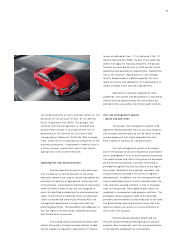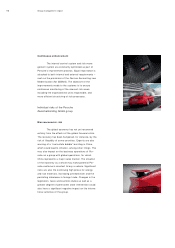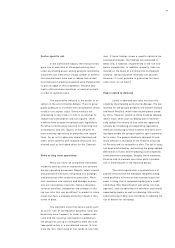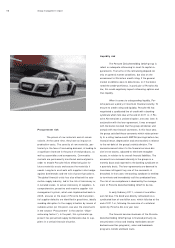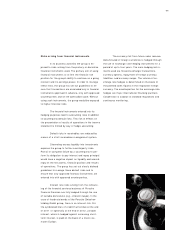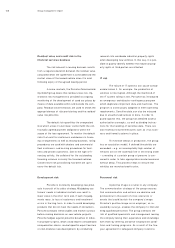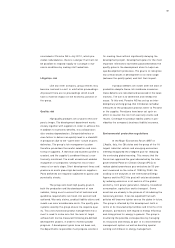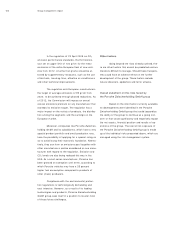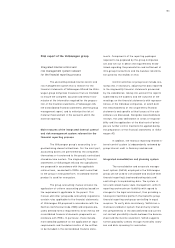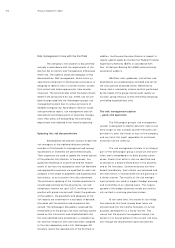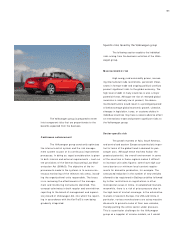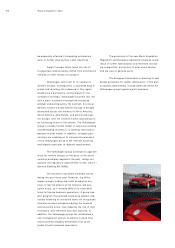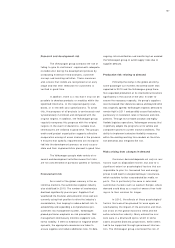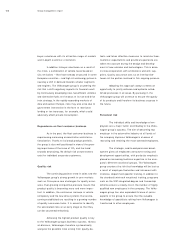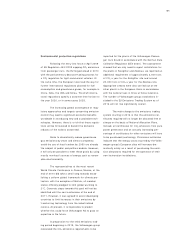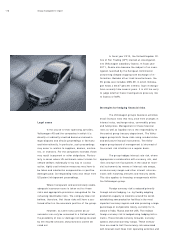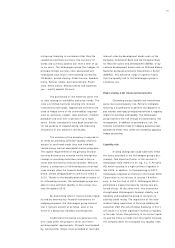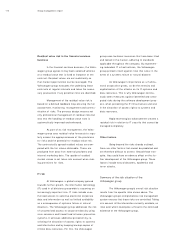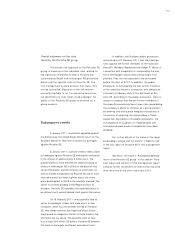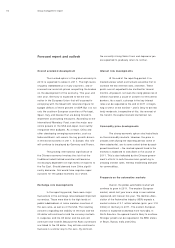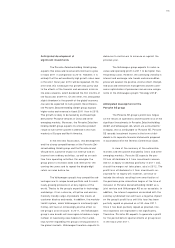Porsche 2010 Annual Report Download - page 107
Download and view the complete annual report
Please find page 107 of the 2010 Porsche annual report below. You can navigate through the pages in the report by either clicking on the pages listed below, or by using the keyword search tool below to find specific information within the annual report.
The Volkswagen group is prepared to enter
into transparent risks that are proportionate to the
benefits expected from the business.
Continuous enhancement
The Volkswagen group constantly optimizes
the internal control system and the risk manage-
ment system as part of its continuous improvement
processes. In doing so, equal consideration is given
to both internal and external requirements – such as
the provisions of the German Accounting Law Mod-
ernization Act (BilMoG). The objective of the im-
provements made to the systems is to ensure con-
tinuous monitoring of the relevant risk areas, includ-
ing the organizational units responsible. The focus
is on reviewing the effectiveness of the manage-
ment and monitoring instruments identified. This
concept culminates in both regular and event-driven
reporting to the board of management and supervi-
sory board of Volkswagen AG, into which the report-
ing in accordance with the KonTraG is now being
gradually integrated.
Specific risks faced by the Volkswagen group
The following section explains the individual
risks arising from the business activities of the Volks-
wagen group.
Macroeconomic risk
High energy and commodity prices, increas-
ing international trade restrictions, persistent imbal-
ances in foreign trade and ongoing political conflicts
present significant risks to the global economy. The
high level of debt in many countries is also a major
potential threat. Although the risk of renewed global
recession is relatively low at present, the above-
mentioned factors could result in a prolonged period
of below-average global economic growth. Likewise,
changes in legislation, taxes, or customs duties in
individual countries may have a severe adverse effect
on international trade and present significant risks to
the Volkswagen group.
Sector-specific risk
The growth markets of Asia, South America,
and central and eastern Europe are particularly impor-
tant in terms of the global trend in demand for pas-
senger cars. Although these markets harbor the
greatest potential, the overall environment in some
of the countries in these regions makes it difficult
to increase unit sales figures; some have high cus-
toms barriers or minimum local content require-
ments for domestic production, for example. The
announced reduction in the number of new vehicles
allowed to be registered in Beijing could be followed
by further restrictions on registrations in other
metropolitan areas in China. In established markets,
meanwhile, there is a risk of price pressure due to
the high level of market coverage. In the automotive
markets of western Europe, the USA and China in
particular, various manufacturers are using massive
discounts to promote sales of their own vehicles,
thereby putting the entire sector under pressure.
This is a particular challenge for the Volkswagen
group as a supplier of volume models, as it would
10 5


